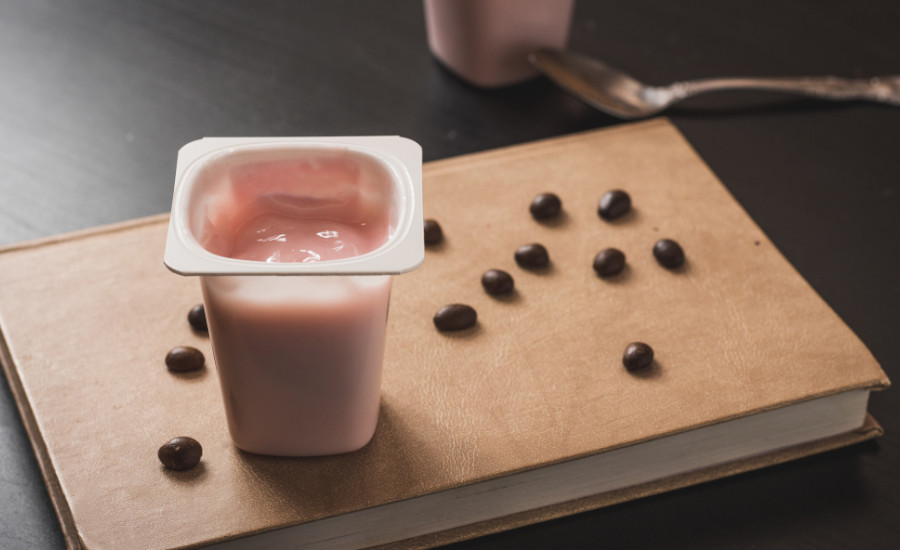Gums, stabilizers and emulsifiers are dairy’s supporting actors
Selected and used appropriately, these ingredients can help dairy processors turn in a winning performance.


Photo courtesy of Ingredient Solutions Inc.

Photo courtesy of J. Rettenmaier USA LP

Photo courtesy of Ingredient Solutions Inc.




Flavors, colors, sweeteners, and inclusions might be the lead actors in dairy product productions. However, gums, stabilizers, and emulsifiers are the supporting actors that can make — or break — a performance.
Gums, for example, can help build viscosity and improve texture, while emulsifiers promote the suspension of a liquid into another liquid. For their part, stabilizers can help maintain emulsions and, therefore, stability.
Choose wisely
To orchestrate a winning performance, however, dairy processors need to choose the right gums, emulsifiers, and/or stabilizers for the particular dairy application.
“Depending on the application, a synergistic gum combination [might be] a better option, as it can help reduce the amount of product added to the system,” notes Matthew Berliner, vice president with ISC Gums, Edison, N.J. “You want gums/emulsifiers that work together to create the desired effect and that give you more efficient functionality.”
In stabilizer selection, dairy processors need to consider the production processes overall and their relation to ingredient functionality, adds Adam Bosset, commercial director for Waldo, Maine-based Ingredient Solutions Inc. (ISI), a division of Tilley Co., Baltimore.
“Whether it be heat time and temperature, mixing speed or order of addition, these factors have a dramatic effect on an end product’s long-term stability and texture,” he points out.
Processors need to understand what works best in a formulation based on the type of heat processing — for example, ultra-high-temperature, high-temperature/short-time, or retort.
“How these affect the systems varies from stabilizer to stabilizer,” Bosset says.
The other ingredients in the formulation, too, should play a role in stabilizer selection, Bosset notes. Dairy processors should consider the protein source and content, as well as the overall fat percentage in the final product.
“Stabilizers are meant to bring the entire system together for both ease of use by production and best consumer experience,” he adds.
Dairy processors also must be careful when ordering what they believe to be the same ingredient from more than one supplier, says An Ho, R&D director for International Food Products Corp. (IFPC), Fenton, Mo.
“Sometimes they do not fully evaluate the function of various suppliers and approve multiple suppliers, even though the strength or functionality of a particular ingredient is not the same, or the grade is different,” she says. “For example, high-acyl gellan [gum] performs differently than low-acyl gellan gum. And low-methoxyl pectin is used for completely different end products than high-methoxyl pectin.”
Dairy processors, therefore, should evaluate each supplier’s hydrocolloid or emulsifier before substituting it for an existing one, Ho says.
Veronica Borne, manager of technical services, Americas for Atlanta-based CP Kelco, agrees, citing differences among stabilizers, too.
“Not all stabilizers are created equal, and dairy products often require a blend to balance technical challenges and improve shelf life,” she says. “For example, pectin is an effective stabilizer of low-pH, acidic dairy drinks that coats the casein to protect the protein [and] stop aggregation and sedimentation. In yogurt, pectin can be used to improve texture and reduce syneresis.”
But there are different types of pectin available, and some react to sugar, salt, calcium, and/or acidity, Borne says. And consumer preferences should come into play here, too.
“Because consumers in India prefer a saltier taste [in] their salted buttermilk, CP Kelco developed a pectin that can tolerate higher salt content, as well as protect proteins during the heat treatment required in production,” she points out.
A thorough discussion with current and existing gum and stabilizer supplier-partners is the logical starting point in the selection process, Bosset suggests.
“As your primary contact for expertise on these ingredients, it is our responsibility to help troubleshoot new formulations, support continuous improvement projects and encourage innovation,” he says. “There are many new items on today’s shelves where slight adjustments could yield noticeable improvements in consumer reception.”
During those types of supplier discussions, however, some dairy processors can be hesitant to share information that could help the supplier recommend the most appropriate solution, notes Frank Welch, application scientist with J. Rettenmaier USA LP, Schoolcraft, Mich. But product characteristics — including fat and protein content, pH, and more — and processing and storage conditions all play a role in gum, stabilizer, and emulsifier selection and need to be shared with the supplier.
“It is important to understand the process conditions and unit operations in order to identify considerations such as if there is sufficient shear to incorporate and properly activate the material or determine the proper point of addition,” he explains. “It is also critical to understand the functionality the processor is trying to achieve. Are they just interested in improving texture or mouthfeel, or is there a functional need to provide emulsification, particle suspension, stabilize proteins or reduce ice crystal formation in a frozen dessert?”
Labeling targets such as organic and clean label and nutritional targets such as reduced sugar and high fiber also should be shared, Welch says. What’s more, dairy processors need to relay any ingredient-related cost constraints to the supplier.
In addition, dairy processors need to understand that heat in the process, including that associated with retort or even ultra-high-temperature applications, also should factor into the selection process because the heat can adversely impact product quality. Borne notes that carrageenan is a “workhorse” in such applications.
“It is renowned for thickening and creating unique textures,” she says. “Carrageenan typically interacts with casein to form a weak gel capable of suspending cocoa in chocolate milk.”
Borne adds that gellan gum also can be used to stabilize dairy beverages, but it requires “a bit more technical understanding” in terms of how to work with the beverages in a harsh heat processing environment.
Use wisely
Dairy processors also must avoid some common errors in the usage of gums, emulsifiers, and stabilizers if they are to realize a successful performance. One such error is inadequate gum hydration, says Berliner.
“Full hydration is required for the gum to achieve full functionality,” he explains. “Proper dispersion methods, mixing speed and temperature, order of addition into the system and knowing how other ingredients in the system can interact with the gum are key for success.”
Speaking of order of addition, Berliner notes that dairy processors should add the gum at a stage where “it can disperse and hydrate properly” before encountering any harsh conditions and before its functionality is required. They will also want to ensure any thickening or gelling does not occur in a system stage that’s “undesired for the processing flow.”
Dairy processors might want to “think small” in terms of the usage of gums, emulsifiers, and stabilizers, too. As Christine Addington, senior technical services manager for Wayzata, Minn.-based Cargill, points out, a small amount of stabilizer can deliver much in terms of functionality.
“But sometimes customers mistakenly believe they need to use more,” she says. “For example, in many formulas, carrageenan is used at a low 0.2% to 0.4% inclusion rate. If formulators use too much, they may run into additional headaches.”
In addition to resulting in an extra expense, high rates of stabilizer usage could negatively affect product quality, Addington says. Dairy processors might find themselves with “fisheyes, clumping or an overly viscous product.” Processing equipment could even plug up, creating additional problems within the dairy processing plant.
“Determining the optimum inclusion rate eliminates these production hassles and saves money on ingredient purchases,” she notes. “Cargill’s technical service team can help brands land on the right stabilizer ingredients and inclusion rates for their application.”
The reformulation of dairy products also brings with it potential for missteps in the use of gums, stabilizers, and emulsifiers. For example, if dairy processors want to boost protein content, reduce sugar, add fruit or create a “more indulgent” texture, they might need to rethink their stabilizer choice, Borne says.
“It’s important to understand protein’s limitations,” she adds. “Seasonal variations in the quality and quantity of protein can cause a stabilizer to fail, regardless of the amount used.”
Benchtop, pilot plant, and in-plant trials are also important as a means to test formulas made with stabilizers, gums, and/or emulsifiers throughout the scale-up process, Addington says.
Leverage what’s new
Dairy processors also will want to pay attention to what’s new within the gum, emulsifier, and stabilizer space. These supporting actors are always improving on their performance to help product developers put on an even more impressive production.
For its part, ISI offers a gellan gum that recently has been “a star ingredient” for dairy ready-to-drink beverages, cheese products, and creamers, Bosset notes. It enhances texture, suspends protein, and improves stability in an “all-in-one package” for dairy processors. It comes in two grades: high-acyl, which is more suitable for sauces and beverages, and low-acyl, which is more appropriate for gel applications and promoting firmness in block cheeses.
“There has been particular success with masking off-flavors from supplemental plant-based proteins,” he says. “This is the tip of the iceberg for gellan’s presence in the food and beverage space. We encourage manufacturers to reach out for specific needs.”
As for J. Rettenmaier, the company recently introduced Vitacel citrus fiber 312.
“In addition to being a source of dietary fiber, Vitacel citrus fiber 312 has a neutral flavor, high water-binding capacity, provides a smooth and creamy texture, and supports emulsion stability,” Welch notes.
And CP Kelco’s new Nutrava citrus fiber is a next-generation fiber ingredient, not an additive, that starts with sustainably sourced citrus peels — plentiful byproducts of the juice industry, Borne notes.
“This makes it an attractive option because it can help formulators meet their clean-label goals, and it supports dietary fiber intake,” she says. “Nutrava citrus fiber supports stability, suspension, body, and texture in a variety of applications, including dairy-based ambient drinking yogurt and plant-based spoonable and drinking yogurt alternatives. It supports reduced-fat and reduced-sugar formulations and may be used as a substitute for starch.”
In addition, CP Kelco recently launched Genu pectin YM-FP-2100, a clean-label-friendly ingredient that promotes a viscosity similar to what pectin and starch would achieve together. According to Borne, dairy processors do not need another stabilizer when using it in fruited drinking yogurts.
CP Kelco also debuted Kelcogel DF gellan gum, a “dual-function solution” that results in “excellent suspension and desired viscosity in dairy beverages,” she says. The ingredient can help dairy formulators reduce usage levels of both “regular” gellan and locust bean gum, which are often used together, or can replace locust bean gum completely, potentially reducing costs without adversely impacting quality.
Cargill also added to its capabilities here. The company’s new SimPure tapioca starches allow formulators to replace modified starches in a variety of applications, Addington says, by combining functionality with significant process tolerance.
“They feature a neutral flavor and excel at controlling syneresis, with water-binding capabilities and cold-storage tolerance that give products stability over shelf life,” she explains. “The range includes starches that create lightly gelled textures, perfect for cup-set Greek yogurt, as well as options more appropriate for stir-in yogurts, which require more fluidity.”
Moreover, several starches within the line boast fat-mimetic qualities to give conventional yogurt and plant-based yogurt alternatives a creamier, more indulgent texture, says Addington.
Another recent addition to Cargill’s lineup is the SimPure soluble rice flour ingredient. The first highly soluble rice flour to be launched into the marketplace, it is designed to be a one-to-one replacement for 10DE maltodextrin, she says. As such, it provides bulking agent functionality, viscosity attributes, and sensory profiles that are similar to 10DE maltodextrin — but may be labeled as just “soluble rice flour.” It is particularly well suited for use in reduced-sugar coffee creamer, beverage, and ice cream applications.
“Consumers continue to be drawn to simple, familiar ingredients they view as less processed and better for their health,” Addington points out. “We’re keenly aware of these marketplace demands, and we support our customers with label-friendly ingredients like SimPure tapioca starches and soluble rice flour.”
And ISC Gums recently debuted the Fusion Synergy EM-S all-natural blend, which can be labeled gum acacia/xanthan gum, guar gum. According to the company, the blend provides emulsification, freeze/thaw stability, and a smooth mouthfeel in ice creams and frozen desserts while also retarding ice crystal growth. In beverages, the blend stabilizes emulsions and provides suspension and texture.
As for IFPC, its “latest and greatest” offerings for dairy processors on the gum, emulsifier, and stabilizer side go beyond the ingredients themselves.
“We have various instruments that can test the functionality of hydrocolloids and emulsifiers, like various modes of checking viscosity; colorimeters; solid, protein and fat analyzers, etc.,” Ho says. “We have several pieces of equipment that can mimic processing to best represent ingredient combinations in the final application. Our microthermics unit can be adjusted to whichever temperature, hold time, homogenization pressure, and in-line cooling that different dairy processors have.”
Looking for a reprint of this article?
From high-res PDFs to custom plaques, order your copy today!










